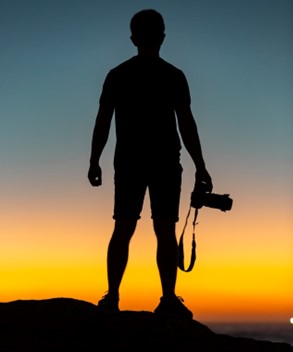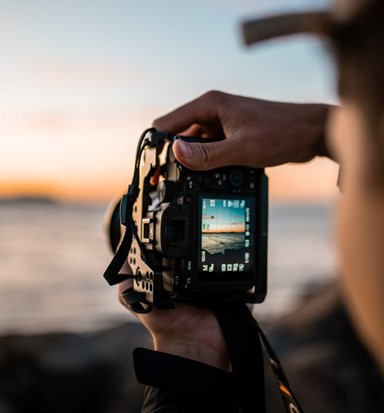Debra DeCaro enjoys nature, landscapes, and being able to capture nature’s beauty on camera. In the following article, Ms. DeCaro discusses ways to capture the most stunning nature photography images whether it’s in your backyard, or the outback.
It’s no secret that Earth is both beautiful and mysterious. From towering redwoods to the magic of coral reefs, there is a lot to discover.
Luckily nature photographers have helped us better understand our surroundings says Debra DeCaro. From capturing some of the most breathtaking moments to the heartwarming relationships between animals and their habitats, nature photography allows us to appreciate our planet even more. For those who are interested in learning more and how to get started, Debra DeCaro discusses some tips to capture the most stunning nature photography.
Have The Right Equipment
While cameras on smartphones are capable of capturing high quality photos, the best nature photography is done using a DSLR camera, preferably with a wide-angle zoom lens and a tripod explains Debra DeCaro.
DSLR Camera
A DSLR camera has a digital single lens reflex (DSLR). It captures images digitally on a memory card and allows photographers to change out different lenses depending on the subject being captured.
The great thing about DSLR cameras is that the user is in full control of the camera settings, meaning that it’s easier to customize settings like light sensitivity, shutter speed, and coloring explains Debra DeCaro. Most DSLR cameras today are Bluetooth enabled so there is no time needed to upload to a computer or editing device. With an iPhone, you can upload and digitally edit and share your photos almost instantly.
Different Lenses
Nature photographers can capture some of the best moments thanks to a collection of different lenses. Wide-angle lenses are good for vast landscapes and a zoom lens allows the photographer to zoom in on details. Eventually, Debra DeCaro says that other lenses can be incorporated, depending on specific needs or wants in your portfolio.
Tripod
Debra DeCaro says that tripods are another important photography tool to have. They help to stabilize the camera, so pictures end up blurry, and are especially nice when waiting long periods for animals to appear. Tripods are also useful for long exposure shots, such as waterfalls or showing how weather can change over a long period of time.
Get To Know All Aspects of Lighting
If there’s one thing to master as a nature photographer, it’s understanding lighting. Because nature is unpredictable, photographers need to be aware of how the lighting can affect their images.
During the brightest, sunniest parts of the day, unfiltered sunlight will create harsh tones and lots of shadows. Therefore, many nature photographers choose to shoot during the “golden hours,” which is just before the sun rises or just after the sun sets. This creates a soft and dreamy lighting that highlights the true colors of the subject.
 Keep The Rule of Thirds in Mind
Keep The Rule of Thirds in Mind
The Rule of Thirds is the idea that subjects should be positioned along an invisible grid to create a balanced and aesthetically pleasing image. Debra DeCaro explains that the photographer should imagine two horizontal lines and two vertical lines across their view; placing the subject where these lines meet will supposedly create the best picture.
If it’s hard to imagine the lines, fear not! Many digital cameras have a grid mode, which allows photographers to overlay the 3×3 grid across their viewfinder.
Play Around with Depth and Angles
It’s easy to point a camera and capture an image, but real talent in nature photography comes from creativity explains Debra DeCaro.
Aperture is the size of the lens opening and changes around a term called the “depth of field.” Great nature photographers know that aperture and depth of field can be a boon to their work: wider aperture can highlight a subject by blurring a background whereas smaller aperture can make the background look sharper and more detailed.
Another easy way to create more interesting nature photography? Play with angles! Try shooting subjects from high up when they are normally photographed up close. Lay on the ground and see what your eye catches. Focus on things like texture. Nature photography is all about thinking outside of the box.
Have A Better Understanding of Nature and The Animals That Inhabit It
If an actor or actress is going to portray someone in a film, they will often take a lot of time studying what they were like: their movements, mannerisms, and gestures. Nature photography is similar says Debra DeCaro.
Knowing how an animal moves through their habitat or when a plant blossoms is integral to capturing that perfect picture. Nature tends to move in a cyclical manner and understanding this enables photographers to plan their shooting schedule around this.
Last Thoughts on Mastering Nature Photography
Debra DeCaro explains that nature photography is a highly rewarding experience, but it does require practice, patience, a sense of curiosity, and a willingness to get a little down and dirty. Mother Nature doesn’t follow the rhythms of humanity but instead creates her own. The best nature photographers understand this and remain respectful of the nature they are capturing






